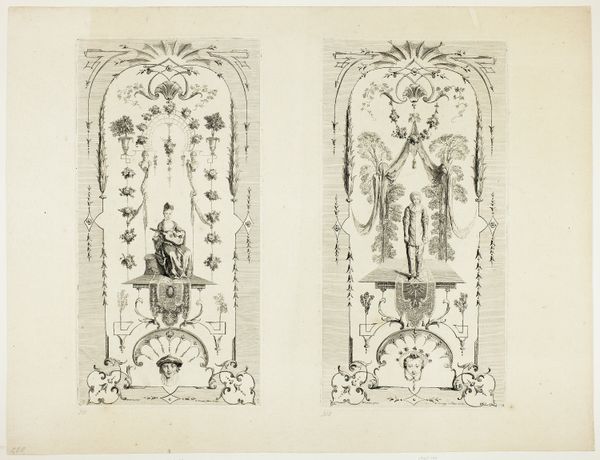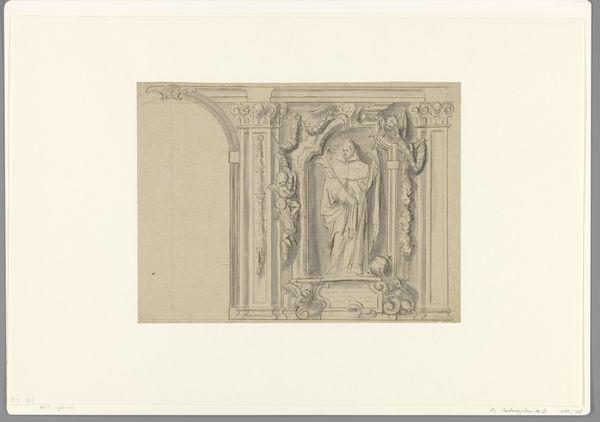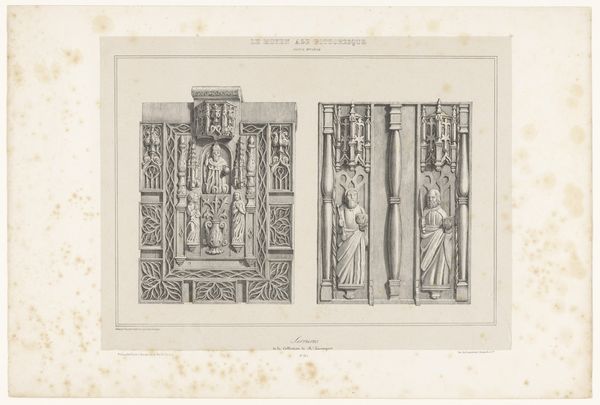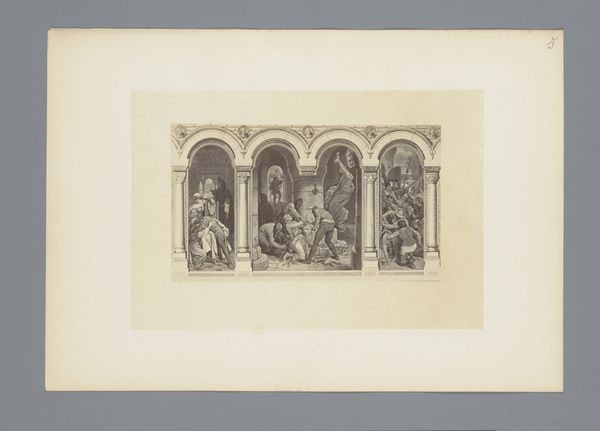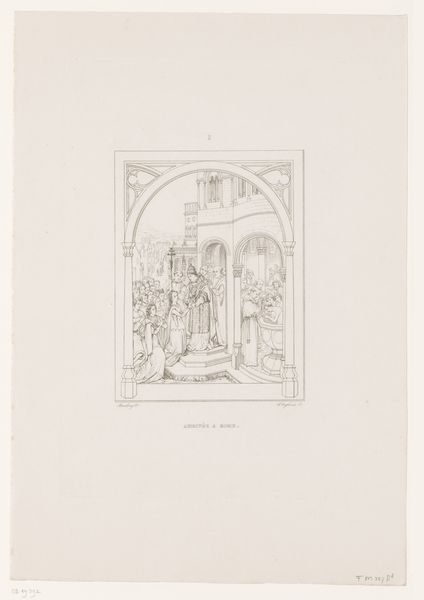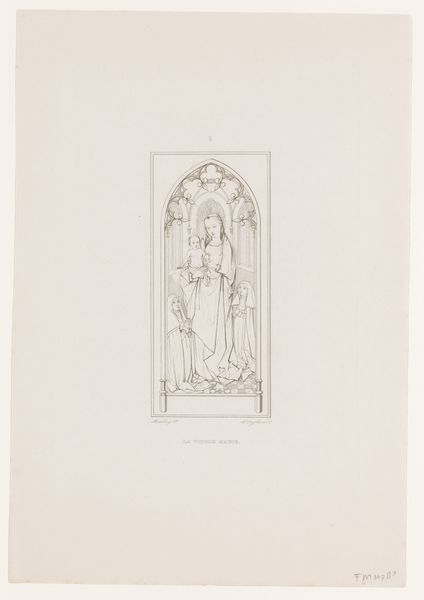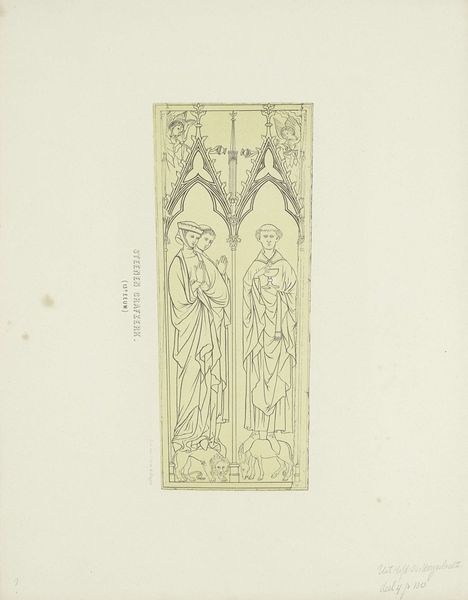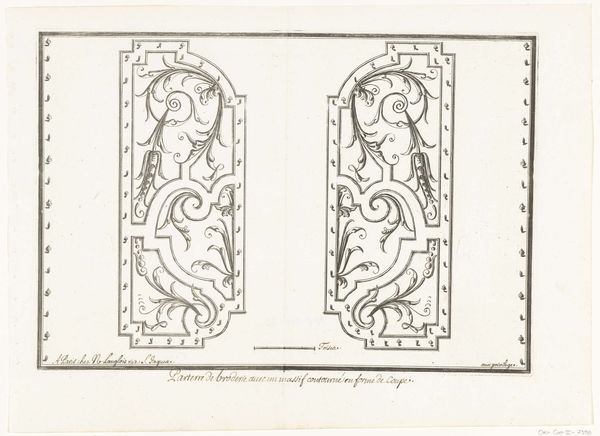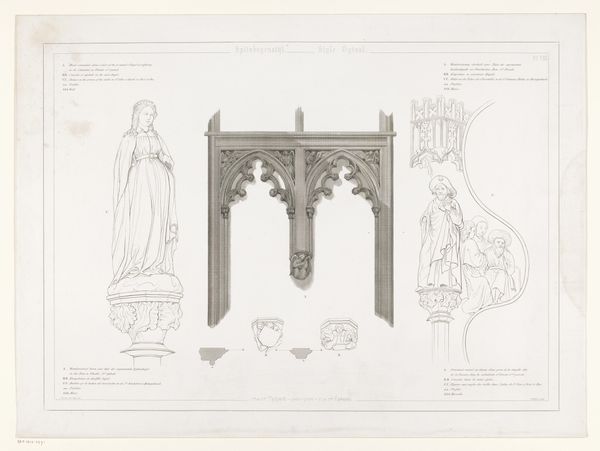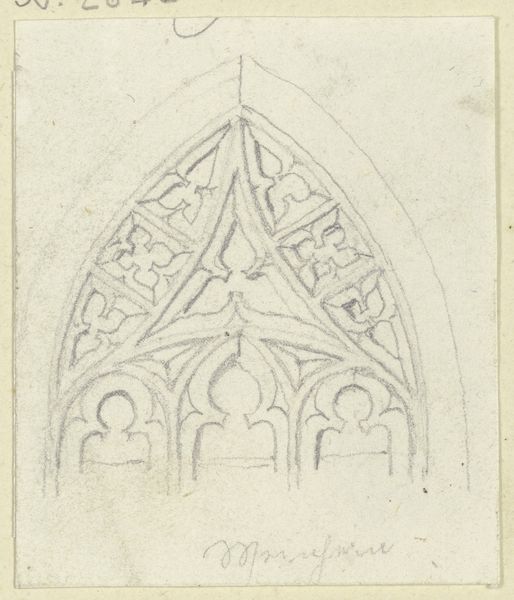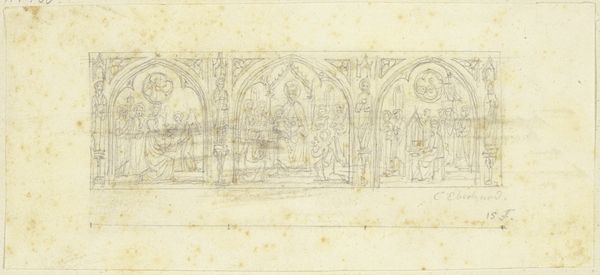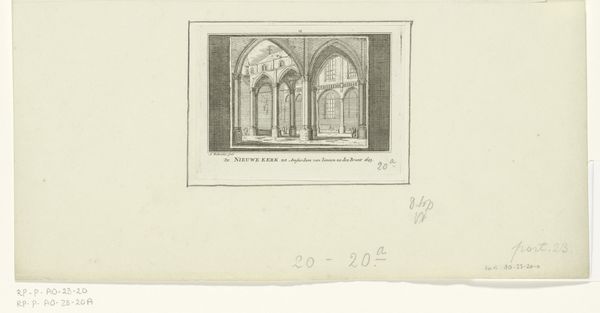
Houtsnijwerk orgel, van omstreeks 1500 van het orgel in de kerk te Naarden before 1923
0:00
0:00
drawing, carving, pencil
#
portrait
#
drawing
#
medieval
#
carving
#
pencil sketch
#
figuration
#
form
#
11_renaissance
#
pencil
#
line
Dimensions: height 215 mm, width 266 mm
Copyright: Rijks Museum: Open Domain
Curator: Here we have a drawing by Jacob Taanman of the wood carvings from an organ in the church in Naarden. The carvings themselves date back to around 1500. Editor: My first impression is one of precise detail and symmetry. The vertical panels are like mirrored reflections, and the subjects depicted within them seem rather stoic and posed. Curator: It's interesting you note the symmetry, as the original carvings would have been part of a larger, more complex whole. Each figure likely represented a saint, patron, or even a member of the donor family who commissioned the organ. Considering the period, this artwork acts as a snapshot into the rigid societal structure of the time and the roles individuals played within the church and broader community. Editor: I am also immediately drawn to the way that the lines define the textures. The heavy garments versus what appears to be metallic armor are cleverly conveyed, as is the ornamental detailing of the Gothic alcoves which frame the figures. Notice how this intricate framework accentuates the lines and contours. Curator: Indeed, and don’t ignore that these men are shown with what could be called trade tools. The ways that professions became symbols of family legacy within the broader story is relevant. Taanman captured a vital part of not just religious life, but socio-economic structures, too. I am also drawn to the fact that what might have been vivid painted colors in the wood carving is abstracted into line in this reproduction, adding an emotional element. Editor: The way Taanman uses line to depict the shift between shadow and light creates such subtle dimensionality on what is essentially a 2-dimensional medium. How this approach flattens the sculptural and spatial depths is masterful, especially since we see its graphic interpretation here on the page. Curator: In that sense, this piece is not just an isolated artwork. This drawing also invites us to consider broader questions about art and documentation, about how historical events are filtered through different hands and re-presented, sometimes generations later. Editor: It offers so many structural elements for study, as it emphasizes line, form and detail while highlighting texture, tonality and value through simple and balanced contrast. Thank you for shedding light on its layered context. Curator: My pleasure. Thinking about the individuals represented here prompts me to question how class and societal structures were being memorialized and what sort of roles were valorized at the time.
Comments
No comments
Be the first to comment and join the conversation on the ultimate creative platform.
